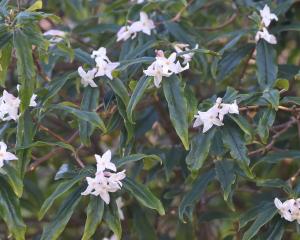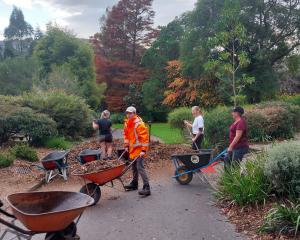If there were an award for the person least likely to be ''in fashion'', I would get it, so I'm always surprised when I accidentally hit the jackpot.
A while back, it was with my hand-knitted socks (I hadn't realised sock-knitting was in vogue, having always done it purely for reasons of comfort and thrift). Now, wonder of wonders, I've hit the jackpot again, this time with a vegetable.
Yes, it seems that vegetables, too, have their moment in the limelight. A while ago it was gooseberries, then rhubarb, and now shallots have taken centre stage.
Nearly every recipe you look at begins with ''take a shallot'', and I couldn't be more pleased. The shallot is queen of alliums.
Deriving its name from Ascalon in Palestine, it was known to the Greeks and Romans as the Ascalonian onion.
Its culinary home is Bordeaux, while the Brits began eating it in the Middle Ages. Shallots hold complex flavours that enhance rather than dominate a dish, making ordinary old onions seem like coarse cousins in comparison.
And they are also beautiful. With a string of shallots in the house, you'll feel as though you're walking through a French market every time you brush by them.
I've always been ''The Lady of Shallots'', growing these gems in my Catlins garden in favour of regular onions for good reason.
While onion seed bravely struggles through the sodden spring soil, doing battle with springtails, slugs, birds, weeds, and sudden drops in temperature, the solid shallot, planted in the ground any time from now onwards, is soon sending up cheerful green shoots, some of which can be snipped and used in salads as you would spring onions.
In our southerly climate or in an unexpectedly cool summer, shallots will keep on keeping on while regular onions sulk, develop thick necks, and refuse to bulb-up.
With shallots, you can also forget the back-breaking hassle of sowing fine onion seed into drills, then thinning, and planting out the seedlings.
Simply push shallot bulbs a third of their depth into the ground, allowing a side-plate-sized space around each for growth, and toss some mulch around to suppress weed growth.
If heavy frosts arrive, the worst they can do is to heave the bulbs out of the ground a little, in which case just press them back in.
In soil that has had a sprinkling of lime worked into it, dose of compost and a little animal manure, the shallots will happily multiply and grow through the summer months.
All they ask is that you keep them moist until the end of the season, at which stage their tops will begin to dry off, signalling harvest time.
So why isn't everyone growing shallots? Perhaps it's because the bulbs are slightly smaller than regular onions, necessitating a little more peeling and prep in the kitchen.
More likely, I feel, it's because these Mediterranean delicacies are not always regularly available in supermarkets.
However, now that shallots are in fashion, sourcing them shouldn't be too difficult.
When you do find them, forget the pot, and sow the lot!Best way to eat a shallot?Rub the smaller ones, unpeeled, in olive oil, bake whole until thoroughly soft.
Cool a little, then pop them out of their skins and straight into your mouth as you would with roast garlic. Yum!
- by Diana Noonan












